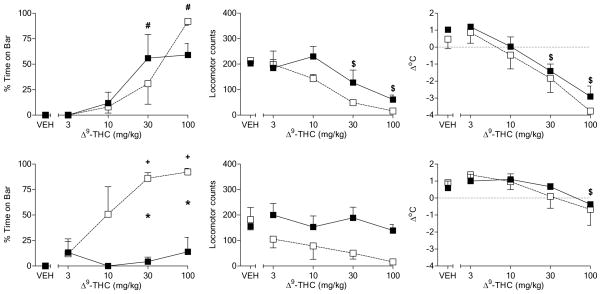Figure 7.
Effects of cumulative doses of Δ9-THC on catalepsy-like behavior (% time with forepaws on bar) [left panels], locomotor counts (middle panels) and change in rectal temperature (right panels) in female rats before initiation of assigned diet (top panels) and after two weeks on the diet (bottom panels). Open squares represent mean (± SEM) for rats fed a standard diet (n=3). Filled symbols represent mean (± SEM) for rats fed a high-fat diet (n=3). # indicates significant main effect of dose. $ indicates significant dose X time interaction and post-hoc difference between Δ9-THC dose and vehicle across diets at indicated time (p<0.05). For catalepsy, significance symbols are used to specify differences revealed by follow-up 2-way ANOVAs. For this measure only, * indicates significant diet X dose interaction and post-hoc between-diet difference (p<0.05). + indicates significant diet X dose interaction and post-hoc difference (p<0.05) of dose compared to vehicle for the indicated diet group.

